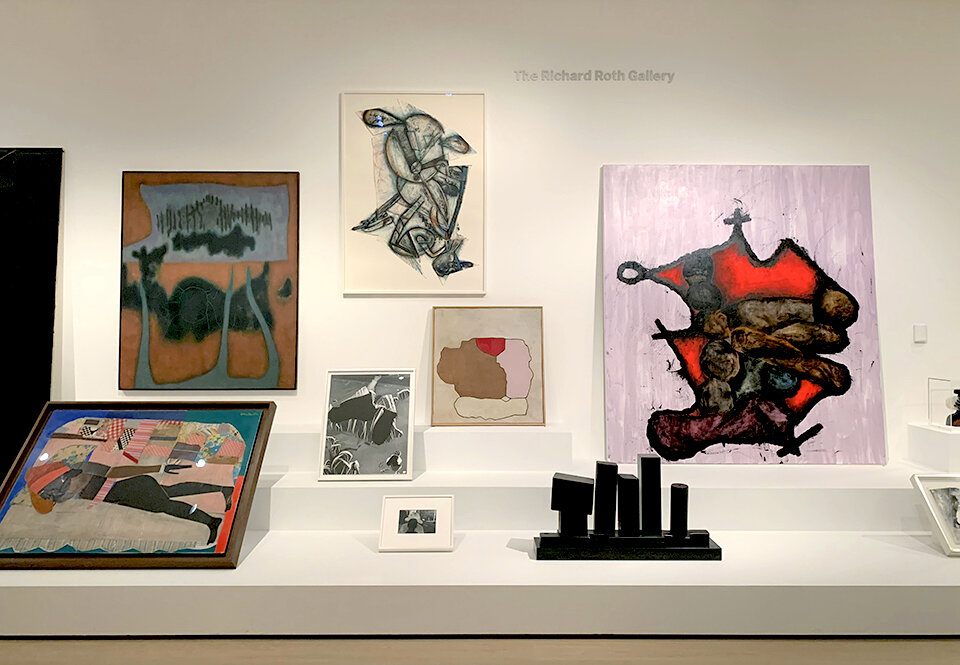Exhibition News: MoMA: The Shape of Shape
Up Dog, 1987-88
Lithograph in 11 colors
on Arches paper
45 1/2 in. x 46 1/2 in. (115.57 cm x 118.11 cm)
Edition of 62
Elizabeth Murray’s Up Dog (1987-88) is in exhibition at Amy Sillman’s MoMA Artist’s Choice through April 20th, 2020. MoMA’s Artist’s Choice exhibition originally started with artist Scott Burton and Kirk Varnedoe, Chief Curator, Department of Painting and Sculpture in 1989. The evolving exhibition has featured artist curated work from Ellsworth Kelly, Chuck Close, Herzog & de Meuron and in 1995, Elizabeth Murray was selected to curate the Artist’s Choice Exhibition, Modern Women.
In the press release for Modern Women, Murray describes the combination of the selected work and how they combine to emphasize “intense self-exploration” in the context of what it meant to be a woman in the art world coming up to the end of the 20th Century.
“I wanted, for myself, to explore what being a woman in the art world has meant,”
–Elizabeth Murray
The exhibition featured icons of 20th Century feminism with works by Louise Bourgeois, Frida Kahlo, Mary Bauermeister, Chryssa, and Bridget Riley.
For Amy Sillman’s Artist’s Choice exhibition, The Shape of Shape she selected a collection of shape artists, indicating that they often seem vulnerable and “out of sync with their time." She wrote that “shape-artists tend to work with uncertainty and vulnerability instead of the self-assurance and dependability of systems.”
Murray and Sillman’s exhibitions feature an intense focus on vulnerability and self inspection with idealogical similarity and curatorial similarity. Lee Bontecou’s Untitled (1959) is prominently displayed in both exhibitions, as well as similarly featuring works by Louise Bourgeois and Louise Nevelson.
Amy Sillman’s essay on shape and Elizabeth Murray’s lecture on the early evolution of shape artwork are worth more consideration.
“As a painter, I’ve always had an eye for shapes. Shape defines every outline, mass, and negative space. And everyone has a personal shape: namely, a shadow, that strange, flat, constantly shifting form that goes wherever you go, attached to both body and psyche. But even though shape is everywhere, we don’t talk about it much; it’s not a hot topic in art, like color or systems. I wonder if, in fact, shape got left behind when modern art turned to systems, series, grids, and all things calculable in the 20th century. Was shape too personal, too subjective, to be considered rigorously modern? Or is it just too indefinite, too big, to systematize?”
